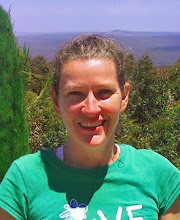DAIRY AND SOY FREE YOGHURT RECIPE
I love to modify recipies to suit my preferences. My sons and I are lactose intolerant and I wanted to make a dairy free and soy free yoghurt that we could enjoy. I experimented with many different types and proportions of dairy free milks and found this one to work the best. My youngest who is nearly 2 goes crazy over this yoghurt and whenever I open the fridge he cries out for his "yoyu" (he can't say yoghurt yet)
The culture I get from Green Living Australia is dairy free. When it was originally created it was made from a dairy base but over the years of being cultured they claim that there would only be a miniscule amount of dairy left, if any at all. If you have an allergy to dairy you are probably best to get a soy culture just to be safe.
Let me know how you go with this
Enjoy!
I have
modified this recipe from the following soy yoghurt recipe:
http://www.bryannaclarkgrogan.com/page/page/1999382.htm
http://www.bryannaclarkgrogan.com/page/page/4318169.htm#small
**To fit into a 1L ‘Easiyo’ yoghurt canister (that subsequently fits into an ‘Easiyo’ thermos).
2 cups of rice milk (I have used a few different organic brands – all worked well)
http://www.bryannaclarkgrogan.com/page/page/4318169.htm#small
**To fit into a 1L ‘Easiyo’ yoghurt canister (that subsequently fits into an ‘Easiyo’ thermos).
2 cups of rice milk (I have used a few different organic brands – all worked well)
2 cups of
coconut milk (I use the tinned“Trident” brand)
1/4 cup
of cornflour
1 teaspoon
agar powder
(you can just
use cornflour if you don’t have agar powder.
Use a slightly heaped 1/3 cup cornflour if not using agar as well)
At least
one tablespoon of sweetener (optional – I don’t use this)
Yoghurt starter (I have used the Green Living Australia culture - Y450B)
Yoghurt starter (I have used the Green Living Australia culture - Y450B)
1. Heat in a saucepan until boiling 2 cups of coconut milk together with 1/2 cup of the rice milk. Remove from heat.
2. Whilst you are waiting for this to boil,
whisk together in another saucepan 2/3 cup of the cold rice milk with the cornflour
and agar powder. Whisk well until it is all dissolved.
3. Whisk into the milk/cornflour/agar mixture 1 and
1/3 cups of the hot coconut/rice milk until it is smooth, with no lumps.
4. Cook
this in a saucepan, stirring constantly but not vigorously, until it is
thickened and glossy.
5. Whisk
the milk/cornflour/agar mixture into the remaining hot coconut/rice milk then
add the remaining cold rice milk. Whisk
to remove any lumps (to remove any
remaining lumps I have used a fine sieve to strain the mixture).
7. Using
a candy thermometer wait until the milk cools to 42 degrees Celsius.
8. When
the milk is at 42 degrees Celsius whisk in the starter then pour everything
into the 1L yoghurt canister and prepare the thermos.
(Whisk in
the yogurt culture, which has been whisked to a smooth paste with about 1/4 cup
of the warm milk (important!) Whisk well to distribute the culture (if you do
not mix it well, you may have a grainy yogurt). Pour the yoghurt into your
container, cover and incubate for 10-12 hours.
***** To prepare the 'easiyo' thermos, fill with boiling hot water to just UNDER the red baton (If you’ve ever made cow’s milk easiyo yoghurt from the sachets it will tell you to add boiling hot water to the top of the red baton and then submerge the cold inoculated milk in the hot water. Your batch of yoghurt will be warm and therefore will not need as much hot water in the thermos. Having the warm milk submerged in the boiling hot water could destroy some of the cultures.
***** To prepare the 'easiyo' thermos, fill with boiling hot water to just UNDER the red baton (If you’ve ever made cow’s milk easiyo yoghurt from the sachets it will tell you to add boiling hot water to the top of the red baton and then submerge the cold inoculated milk in the hot water. Your batch of yoghurt will be warm and therefore will not need as much hot water in the thermos. Having the warm milk submerged in the boiling hot water could destroy some of the cultures.
9. Refrigerate immediately for about 12 hours before eating-- this is part of the incubation process and helps develop flavour. The yogurt will keep for about a week.




3 comments:
Lovely to hear from you. I apologise for not replying sooner but as I am new to the world of blogging I only just realised you had left a comment.
I have read a bit about kefir and how to make it, however my aim was to make a non dairy yoghurt as I really do consider dairy to be non essential in our diet. Do you know if you can use kefir grains instead of a powdered yoghurt culture/starter?
Take care
Lucy
I started making kefir using the Body Ecology kefir starter, but I find it much easier to make using kefir grains & they grow really well in my kitchen :)
Post a Comment